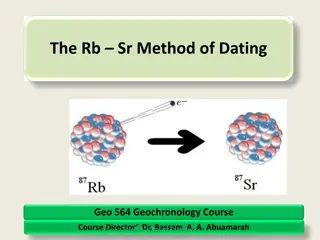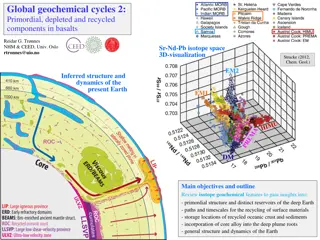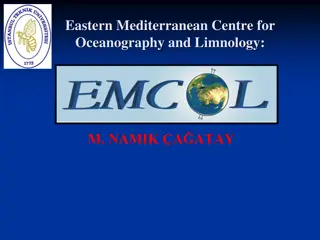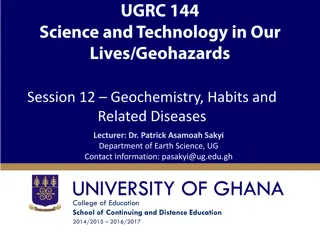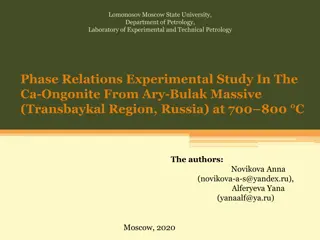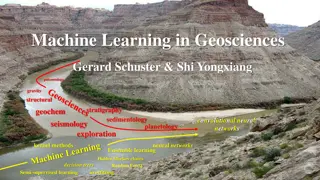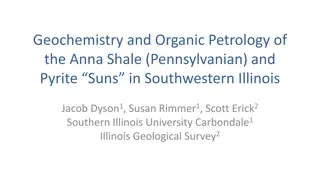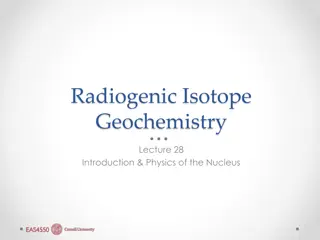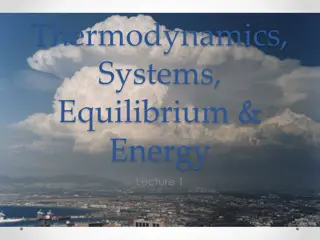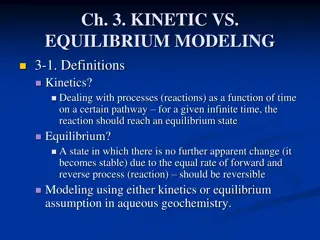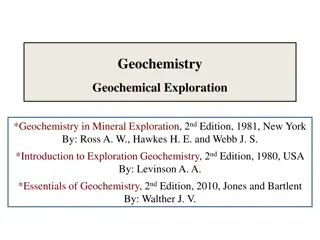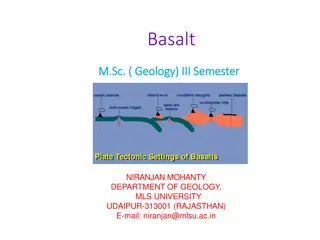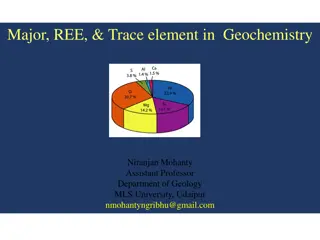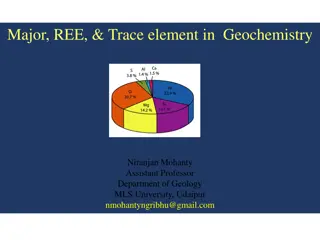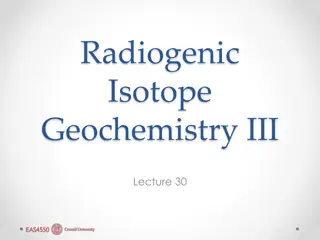
Crystal Chemistry Overview
Explore the fascinating world of crystal chemistry, with topics such as polymorphism, isomorphism, atomic substitution, and pseudomorphism. Learn about how minerals can exist in different crystal forms, the concept of coupled substitutions, and more. Discover the intricate structures and transformations of minerals under varying conditions.
Download Presentation

Please find below an Image/Link to download the presentation.
The content on the website is provided AS IS for your information and personal use only. It may not be sold, licensed, or shared on other websites without obtaining consent from the author. If you encounter any issues during the download, it is possible that the publisher has removed the file from their server.
You are allowed to download the files provided on this website for personal or commercial use, subject to the condition that they are used lawfully. All files are the property of their respective owners.
The content on the website is provided AS IS for your information and personal use only. It may not be sold, licensed, or shared on other websites without obtaining consent from the author.
E N D
Presentation Transcript
UNIT UNIT- -I I Crystal Chemistry
POLYMORPHISM POLYMORPHISM A mineral that can exist in more than one crystal form is said to be polymorphous. Illustration that chemical composition do not exclusively decide crystal structure. Different polymorphs of same substance are formed at different temperature, and pressure environment. Polymorphism tells us the conditions under which rocks are formed e.g. diamond & graphite Enantiotropic polymorphism: Change from one polymorph to other is reversible. E.g. Quartz and tridymite Monotropic polymorphism: Irreversible e.g. Marcasite(orthorhombic) to pyrite(cubic) but not the reverse. Diamond to graphite was initially believed to be monotropic but experimental studies using high pressures revealed that it is indeed enantiotropic.
POLYMORPHISM POLYMORPHISM Rate of change of one polymorph to another can be very slow or very rapid (INSTANTANEOUS). Change from one polymorph to another is called INVERSION or TRANSFORMATION. Two types of inversions exist: DISPLACIVE INVERSION: immediate & reversible. No breaking of bonds is involved but simply bending E.g. low qtz high qtz.; low leucite-high leucite (high forms-more symmetry).
ISOMORPHISM ISOMORPHISM Phenomenon of minerals having analogous formulae but having closely related crystal structures. E.g spinel group of minerals, garnet group and amphibole group. Here anions and cations of the same relative size (showing same coordination) and in same numbers crystallize in same structure type. Important factor in isomorphism is similarity in size relations of different ions rather than any chemical similarity.
Atomic Atomic substitution substitution 100% pure mineral is v.v.v.rare. Quartz >99 wt%. (EPMA) Most minerals have variable chemical compositions due to substitution's. The nature and extent of substitution depends on ionic size and charge and on nature of atomic bonding in a mineral s structure (Pauling s rule). SIMPLE SUBSTITUITIONS: Involving substitutions due to similarity in charge and size e.g. K and Na replace each other in feldspars and amphiboles; Fe 3+and Al 3+replace each other in garnet and spinel. Here substituting ion and substituted ion has same charge.
Atomic Atomic substituition substituition COUPLED SUBSTITUTIONS: Ca 2+replacing Na 1+in feldspar. To maintain the charge balance, Al 3+replaces Si 4+ This can be written as CaAl= NaSi or Ca 2+Al 3+ = Na 1+Si 4+ Anions too substitute for each other in minerals. In some micas and some amphiboles, Cl-or F- may replace (OH)-
PSEUDOMORPHISM PSEUDOMORPHISM A mineral can replace another mineral without change in its external form. They are called pseudomorphs of each other. Two types are present: No chemical change involved. No change of substance occurs eg. calcite and aragonite. (PARAMORPHISM) Chemical change involved: gypsum after anhydrite The formation of pseudomorph implies that original mineral is NO LONGER in stable under changed physical & chemical conditions and thus replaced by another mineral more suited to the conditions. Stability conditions of two minerals involved are known, then it is possible to estimate the pressure-temperature conditions in which change took place.
What do Paulings Rules tell us? What do Pauling s Rules tell us? They are fundamental concepts for understanding crystal chemistry of minerals. They express conditions for stability of minerals. They indicate that only very STABLE compounds occur as minerals. Less stable compounds either do not form in nature or soon decompose to minerals that are stable at that conditions. They also provide a basis for classifying minerals.

